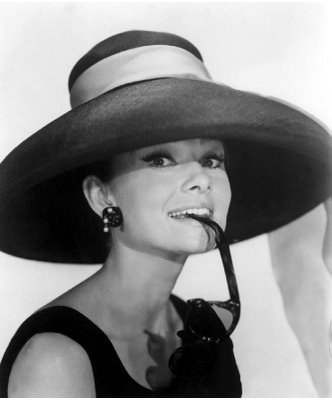

Audrey Hepburn was born Audrey Kathleen Ruston on 4 May 1929 on Rue Keyenveld in Ixelles, a municipality in Brussels in Belgium.Her father, Joseph Victor Anthony Ruston (1889-1980), was British born in Úžice, Bohemia to an English/Austrian father and Austrian mother. Ruston had earlier been married to Cornelia Bisschop, a Dutch heiress he met in the Dutch East Indies. Although born Ruston, he later double-barrelled the surname to the more "aristocratic" Hepburn-Ruston, mistakenly believing himself descended from James Hepburn, third husband of Mary, Queen of Scots. Her mother, Baroness Ella van Heemstra (1900-1984), was a Dutch aristocrat and the daughter of Aarnoud van Heemstra, who was mayor of Arnhem from 1910 to 1920 and served as Governor of Suriname from 1921 to 1928. Ella's mother was Elbrig Willemine Henriette, Baroness van Asbeck (1873-1939), who was a granddaughter of Dirk van Hogendorp. At 19 Ella had married the knight Hendrik Gustaaf Adolf Quarles van Ufford, but they divorced in 1925. Hepburn had two half-brothers from this marriage: Jonkheer Arnoud Robert Alexander "Alex" Quarles van Ufford (1920-1979) and Jonkheer Ian Edgar Bruce Quarles van Ufford (1924-2010). Ruston and van Heemstra married in Batavia in September 1926. They moved back to Europe, to Ixelles in Belgium, where Hepburn was born in 1929. In January 1932 the family moved on to Linkebeek, a nearby Brussels municipality.Although born in Belgium, Hepburn had British citizenship through her father. Because of her mother's family in the Netherlands and her father's job with a British company,the family often travelled between the three countries. With her multinational background, she had an instinctive talent for languages and went on to speak fluent English, Dutch, French, Spanish and Italian. Hepburn was a playful and imaginative child who discovered a passion for ballet by the age of 5, loved to read and was nicknamed "Monkey Puzzle" by her father.
After the war ended in 1945, Ella and Audrey moved to Amsterdam, where Hepburn took ballet lessons for three years with Sonia Gaskell, arguably the leading figure in Dutch ballet. In 1948 she appeared for the first time on film, as an air stewardess in an educational travel film made by Charles van der Linden and Henry Josephson, Dutch in Seven Lessons. Gaskell provided an introduction to Marie Rambert, and in 1948 Hepburn traveled with her mother to London to study ballet at the Ballet Rambert. She supported herself with part-time work as a model. Around that time she decided to drop "Ruston" from her double-barreled surname. When Hepburn asked Rambert about her future, Rambert assured her that she could continue to work there and have a great career, but her relatively tall height of 5 ft 7 in (1.70 m)coupled with her poor nutrition during the war would keep her from becoming a prima ballerina. Hepburn trusted Rambert's assessment and decided to pursue acting: a career in which she at least had the chance to excel. After becoming a star, Rambert said of Hepburn, "She was a wonderful learner. If she had wanted to persevere, she might have become an outstanding ballerina." Hepburn's mother worked menial jobs in order to support them but Hepburn needed to find employment. Since she had trained in theatre all her life, working as a London chorus girl seemed sensible. "I needed the money; it paid 3 more than ballet jobs." She performed in the musical theatre revues High Button Shoes (1948) at the London Hippodrome and Cecil Landeau's Sauce Tartare (1949) and Sauce Piquante (1950) at the Cambridge Theatre in the West End. Her theatrical work, however, revealed that her voice was not strong and needed to be developed. Hepburn, therefore, took elocution lessons with the actor Felix Aylmer.After being spotted by a scout for Paramount Pictures on stage,Hepburn registered with the casting officers of British film studios while working in the West End and appeared in minor roles in the 1951 films One Wild Oat, Laughter in Paradise, Young Wives' Tale and The Lavender Hill Mob. Hepburn's first significant film performance was in Thorold Dickinson's The Secret People (1952), in which she played a prodigious ballerina and performed all of her own dancing sequences. Noticed by the French novelist Colette when on the set of Monte Carlo Baby (1951), Hepburn was also chosen to play the title character in the Broadway play Gigi. Upon first sight of Hepburn, Colette whispered, "Voilà," indicating Hepburn, "there's your Gigi."Opening on 24 November 1951 at the Fulton Theatre, the play ran for 219 performances finishing on 31 May 1952.Hepburn's debut on Broadway earned her a Theatre World Award. Three months after the birth of her son, Sean, in 1960, Hepburn began work on Blake Edwards' Breakfast at Tiffany's (1961), a film very loosely based on the Truman Capote novella. The film was drastically changed from the original version. Capote disapproved of many changes and proclaimed that Hepburn was "grossly miscast" as Holly Golightly, a quirky New York call girl,a role he had envisioned for Marilyn Monroe.Hepburn's portrayal of Golightly was adapted from the original: "I can't play a hooker," she admitted to Marty Jurow, co-producer of the film.Despite the lack of sexual innuendo in her character,her portrayal was nominated for the 1961 Academy Award for Best Actress and became an iconic character in American cinema. Often considered her defining role,Holly Golightly, Hepburn's high fashion style and sophistication within the film became synonymous with her. She named the role "the jazziest of my career" yet admitted that, "I'm an introvert. Playing the extroverted girl was the hardest thing I ever did." The little black dress which is worn by Hepburn in the beginning of the film is cited as one of the most iconic items of clothing in the history of the twentieth century and perhaps the most famous little black dress of all time
Home